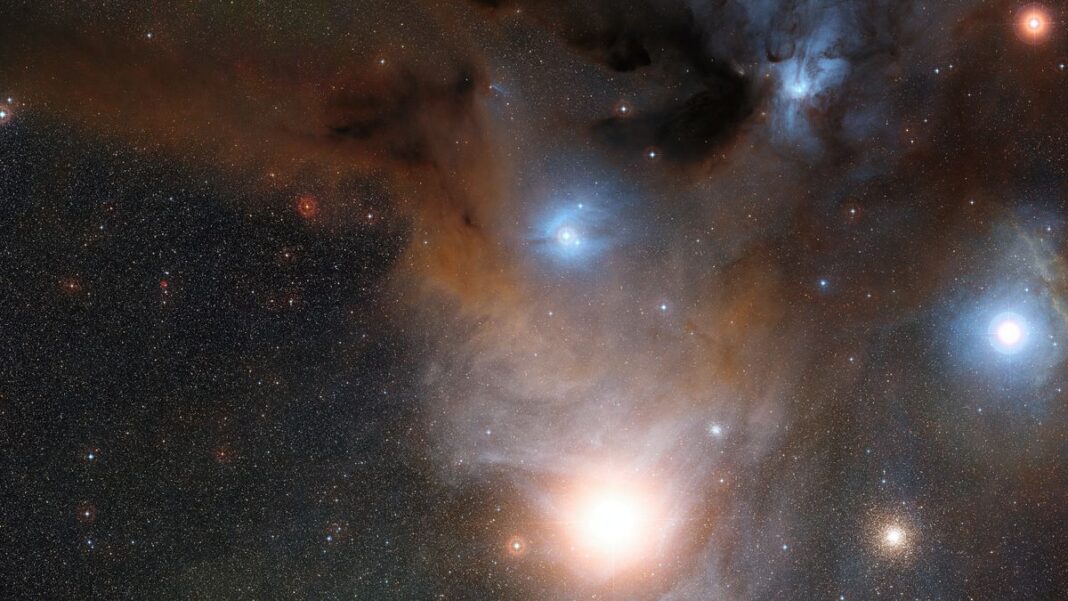A new machine-learning algorithm aims to provide improved measurements of stellar ages, allowing astronomers to better model how stars evolve.
The algorithm is an AI version of a project called EAGLES, which stands for Estimating Ages from Lithium Equivalent Widths. EAGLES uses the lithium abundance of stars to determine their age. Previously, this work had been done by fitting data to graphs. With surveys producing more and more data, this task has grown time-consuming and complex, so an AI has been written to take on the job.
All stars are born containing the same proportion of lithium, but as they age, they lose this lithium at different rates depending on their masses and therefore temperatures (since the more massive the star, the hotter the temperature, which astronomers use as a proxy because they can’t measure the mass of the star directly).
The hotter a star, the greater the rate of convection in that star’s outer layers and the more this churns up the lithium on a star’s surface. As lithium sinks into a star’s interior, it’s converted into two helium nuclei by fusing with a proton, and the result is that the lithium is increasingly depleted as time goes by. Therefore, the abundance of lithium observed in a star, coupled with the star’s temperature, should together provide a measure of that star’s age.
Related: Artificial intelligence could help hunt for life on Mars and other alien worlds
Traditionally, astronomers measure a star’s age with lithium by looking at the strength of the lithium spectral line in a star’s spectrum (which is what ‘equivalent widths’ in EAGLES’ name refers to) then trying to fit it to models of stellar evolution.
Not only is this method “difficult to do and requires a lot of work,” but scientists also want to expand beyond lithium abundances to include other stellar properties that can indicate age as well, said George Weaver of the United Kingdom’s Keele University in an interview with Space.com.
Weaver and his supervisor, University of Keele astrophysicist Robin Jeffries, have thus introduced artificial intelligence to take on some of the workload, particularly when handling lots of information covering the other age indicators coming in from big, all-sky surveys. In these surveys, it’s possible the AI can find new, previously undiscovered relationships in stars’ data.
Reconstructing star-formation history
Astronomers can more easily measure the relative ages of stars in star clusters, because a cluster’s stars were all born at the same time, meaning they can be directly compared based on how they have evolved.
With this in mind, Weaver and Jeffries sampled 6,000 stars, from a total of 52 clusters, observed by ESA’s Gaia mission. Then, they trained the EAGLES algorithm on the selected stellar bodies.
“A stellar evolution model tells you what a star should look like as a function of age,” Jeffries told Space.com. “Clearly, if we have stars whose age we know, then that’s very helpful when comparing to stellar evolution models.”
AI is being used increasingly often in astronomy as a method of handling big data, and EAGLES is no different. It will soon be applied to two deep surveys, beginning with the WEAVE (WHT Enhanced Area Velocity Explorer) survey on the William Herschel Telescope at La Palma this year, and continuing in the 4MOST (4-meter Multi-Objects Spectrograph Telescope) survey on the VISTA (Visible and Infrared Survey Telescope for Astronomy) telescope at the European Southern Observatory in Chile in 2024.
“These are two major spectroscopic surveys that will cover essentially the whole sky and take spectra of literally tens of millions of stars,” said Jeffries. “They will produce lithium equivalent widths, temperatures, rotation rates and measurements of magnetic activity. We then hope to provide the age, which is an essential part of the whole raison d’etre for doing these surveys, which is to try and reconstruct the star-formation history of various populations of stars in the galaxy.”
Weaver hopes to eventually expand EAGLES even further by including age indicators besides lithium abundance. Some options include barium abundance, magnetic activity and stellar rotation rates.
“You can put in as much or as little data as you have, and the model will do its magic,” said Weaver. “So, at the minute, we’re just expanding those additional age indicators.”
The EAGLES neural network does have one significant limitation, however. It can only accurately measure the ages of stars up to about 6 billion years old, which is the age of the oldest cluster the algorithm was trained on. Furthermore, the oldest stars in the universe tend to all have the same amount of lithium.
“You wouldn’t get an age discriminator out of lithium for the oldest stars,” said Jeffries. “It works best for young stars.”
This means EAGLES cannot be used to measure the age of controversial stars such as the Methuselah Star, which according to some studies, has an age older than the 13.8 billion years of the universe – although more recent studies have discredited such a notion and revised its age to less than the age of the universe.
The research was presented at the National Astronomy Meeting in Cardiff at the beginning of July, and a paper published in Monthly Notices of the Royal Astronomical Society.


